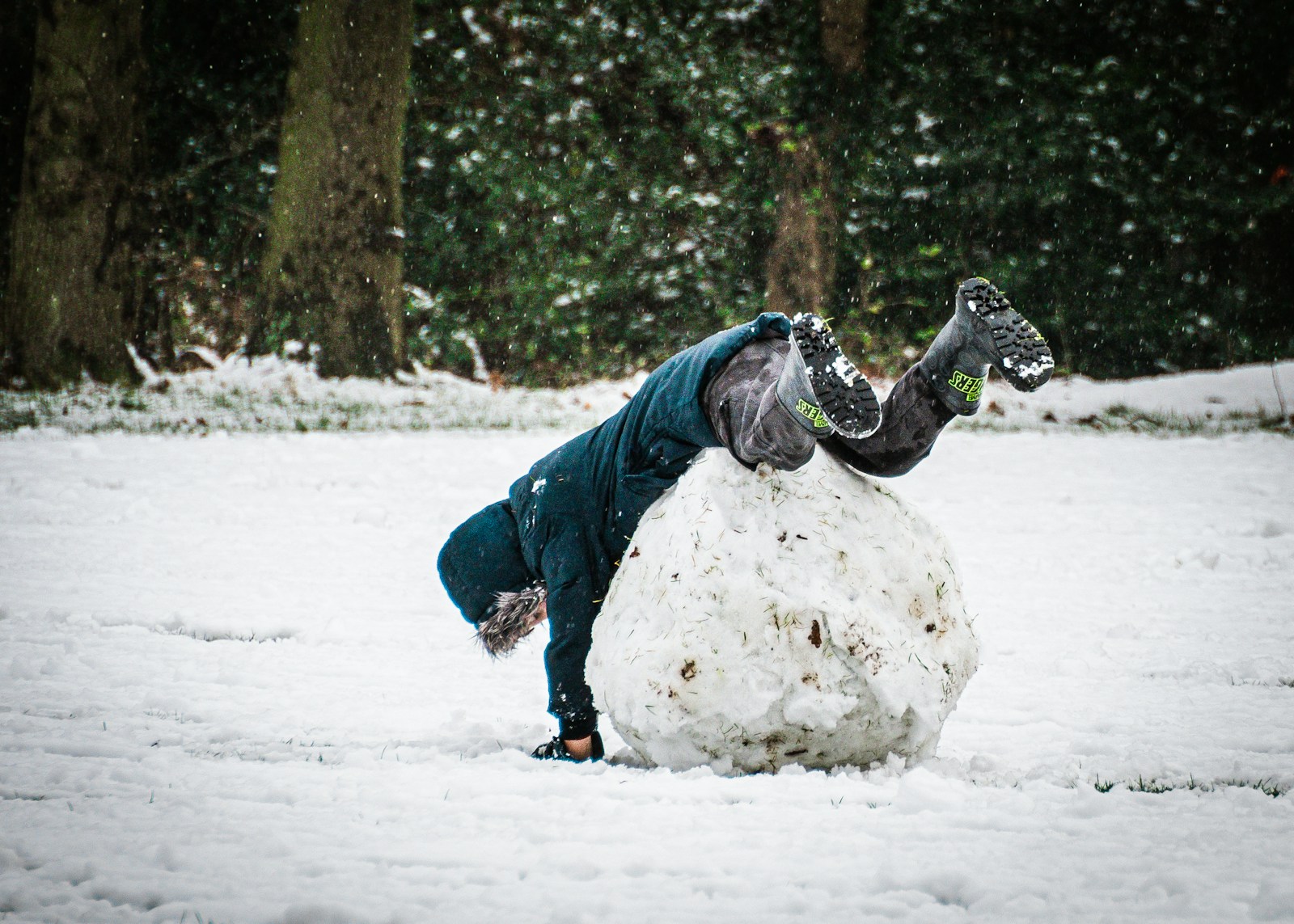
muñeco de nieve

snowman
The Spanish word 'muñeco de nieve' refers to a figure made of snow in the shape of a human. It's usually built by children during winter months when there's sufficient snow. The exact usage of 'muñeco de nieve' in conversation or written text heavily depends on context. It could be used literally to refer to a real snowman, or figuratively to describe something cold or someone emotionless.
Example sentences using: muñeco de nieve
El niño hizo un muñeco de nieve en el jardín.

The boy made a snowman in the garden.
The example sentence shows a child partaking in a typical winter activity, which is building a snowman in the garden.
Mi muñeco de nieve se ha derretido con el sol.

My snowman has melted in the sun.
This sentence shows the inevitable outcome of leaving a snowman out too long in the sun - it melts.
María y Juan hicieron el muñeco de nieve más grande de la calle.

Maria and Juan made the largest snowman in the street.
The sentence describes Maria and Juan working together to create the biggest snowman on their street.
Decoramos el muñeco de nieve con una bufanda y un sombrero.

We decorated the snowman with a scarf and a hat.
The sentence depicts a common practice of decorating a snowman with items like scarves and hats to personify it.
El muñeco de nieve de nuestra clase ganó el concurso de la escuela.

Our class' snowman won the school's contest.
The sentence describes a school contest where classes compete against each other to make the best snowman.
Hicieron un muñeco de nieve para celebrar la primera nevada del año.

They made a snowman to celebrate the first snowfall of the year.
Here the sentence shows a celebration of the first snowfall of the year by making a snowman.
Tomamos una foto de nuestro muñeco de nieve antes de que se derritiera.

We took a photo of our snowman before it melted.
The sentence conveys a sense of sentimentality or capturing a moment of happiness before it fades away, in this case, before the snowman melts.
El muñeco de nieve en la tarjeta de Navidad estaba sonriendo.

The snowman on the Christmas card was smiling.
This sentence refers to a regular practice of featuring friendly, smiling snowmen on a Christmas greeting cards.
Por la ventana veo a mi perro jugando con el muñeco de nieve.

Through the window, I see my dog playing with the snowman.
This sentence paints a picture of observable scene through a window where a dog is playing with a snowman.
Mi hija dibujó un hermoso muñeco de nieve en su cuaderno.

My daughter drew a beautiful snowman in her notebook.
The sentence depicts a child expressing her thoughts on winter or snow in an artistic form.